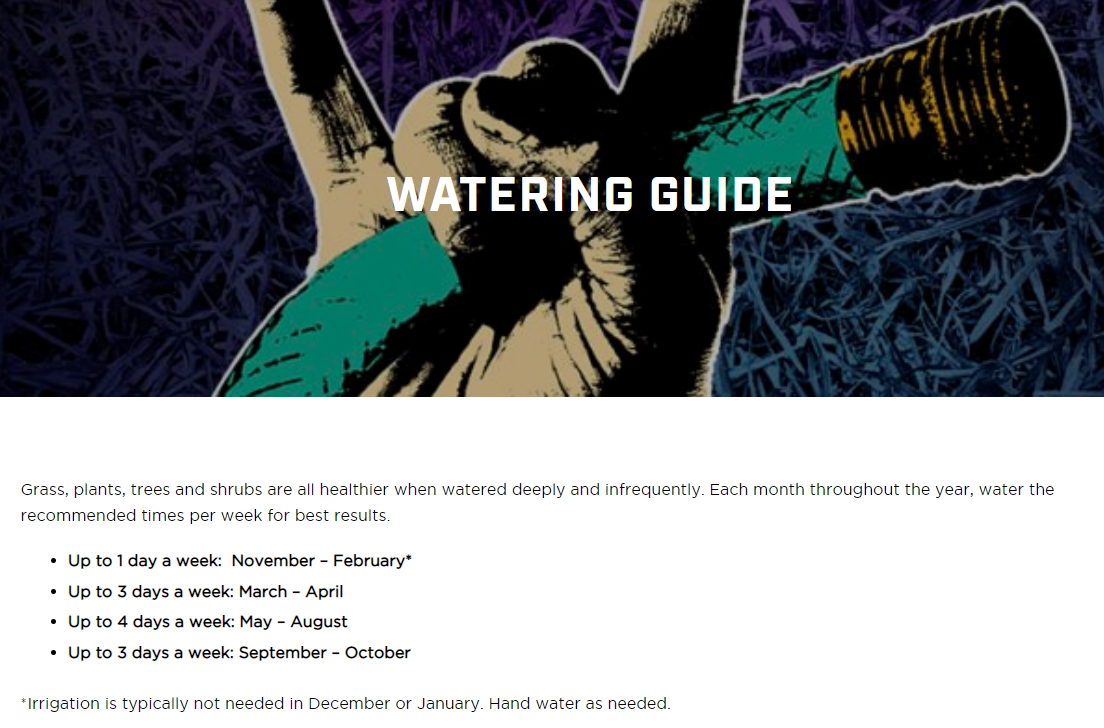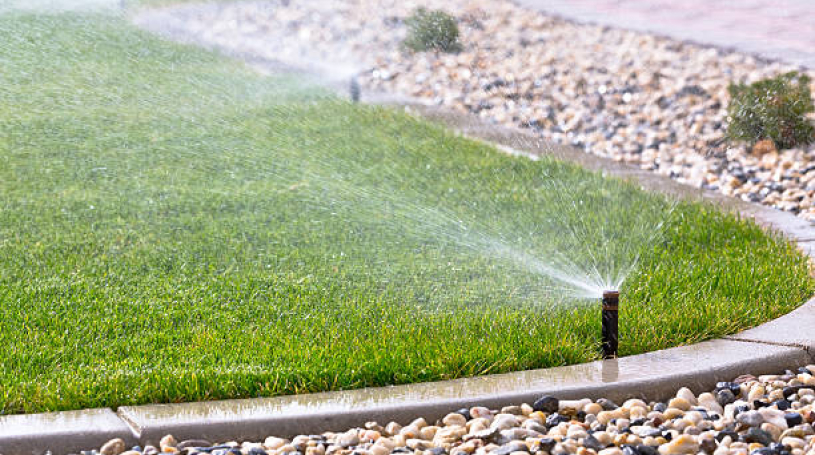Efficient Landscape Watering Practices
By: Brian Webster, General Manager SunWest Management
Certainly, how you water and feed the plants and grass in your yard matters.
I’m in St. George, and much of the soil here is pretty crappy--soil conditioners and other organic material helps a lot. The right types of fertilizers, at the right times of the year, are also very beneficial. Additionally, products that help the grass and plants retain moisture between waterings are super useful in any of Utah’s climates. If you have questions about any of these practices, connect with a professional, and get the feeding dialed in for your yard.
With that right feeding specifically prescribed for your yard, the other focus is watering practices. We’ll get to some specifics. But first let’s focus on you, your efforts!
The watering schedule for your landscaping is something that is best controlled by you, at your own house. Sure, hire a professional to come in, do a water cup test, make sure that the lawn is being efficiently watered, without waste, check the drip system to make sure there are no leaks, and each emitter is working as it should. But, day-to-day, how much water is enough? You are there and see it, you’ll know best. Be sure to adjust how much you water several times through the year. Pause your watering when there’s rain. Create a habit of being aware. Okay, off my soap box.
So, what’s the guide for how much to water?
Here is the Washington County Water Conservancy District’s recommendation, from their site. I’m here, so I’m focusing on Wash County. For up north, check your district’s site, and follow your city’s guidelines and ordinances.

Notice the advice, great advice, that plants and grass are healthier when watered deeply and infrequently. Frequent and light watering encourages shallow roots. Shallow roots don’t cut it against summer heat, or winter cold. To develop deeper roots, infrequent watering is needed. So, as we go into summer, if your and plants can’t thrive on water every other day, then it means something else is off in your care. Do they need some added nutrients? Is there a pest or disease, like grubs or fungus? Is the soil just too compact and needs aeration? Honestly, most of the issues we see in yards, when we are trying to bring plants or lawn back to life, are when there was some issue, again grubs, fungus, weeds, whatever, that are just made worse because the thought is, ‘oh, this plant is struggling, I’ll just water it more’. When really, additional water usually just adds to the problem.
Again, be aware. We can follow the district’s advice and still have yards that flourish!
The Washington county district’s website even has a printable watering schedule that you can put by your irrigation clock. Specific instructions on how to cycle and soak when watering your lawn as well as rates and times for drip irrigation. It’s all there.
Let me emphasize the importance of the ‘cycle and soak’ approach. Depending on the condition of your soil, it will only accept so much water before it begins to run off. So, watering for repeating, shorter cycles, before runoff begins, with time to soak between cycles, is the best way to be sure water gets deep enough to encourage deep roots.
The water districts’ sites are all packed with good information—pertinent to each area. Know the guidelines. Know the best practices for your area. Then, observe and adjust watering (and other care) when needed.
- Central Utah: www.cuwcd.org
- Jordan Valley: www.jvwcd.org
- Washington County: www.wcwcd.org
- Weber Basin: www.weberbasin.com
I think we can all be a little better about our water use, and our yards won’t even know it!
| Brian Webster CMA® CMCA® AMS® General Manager |

